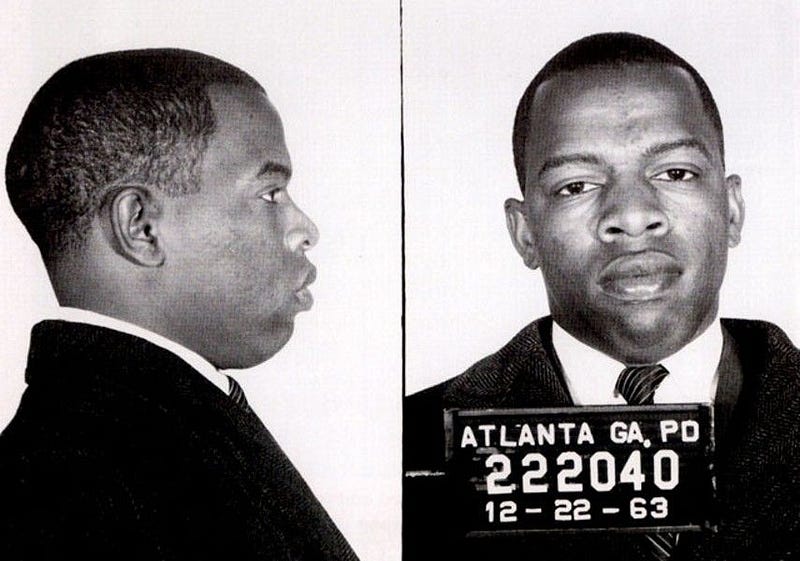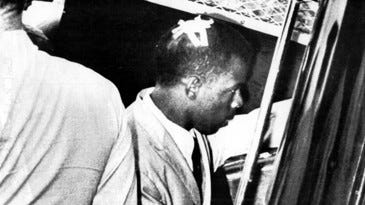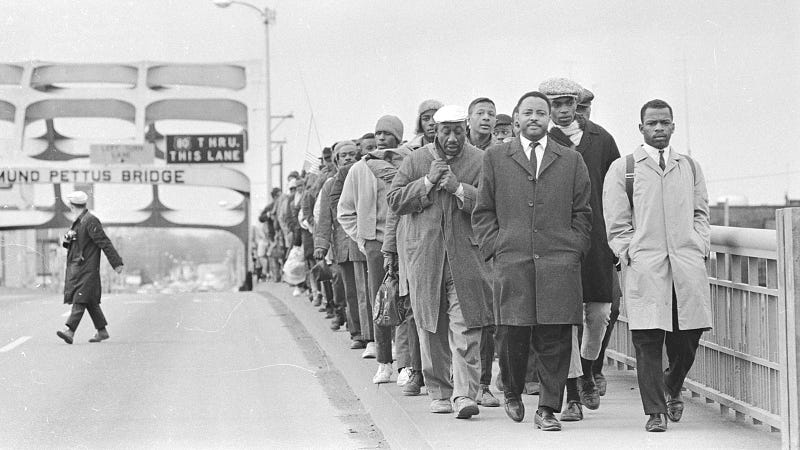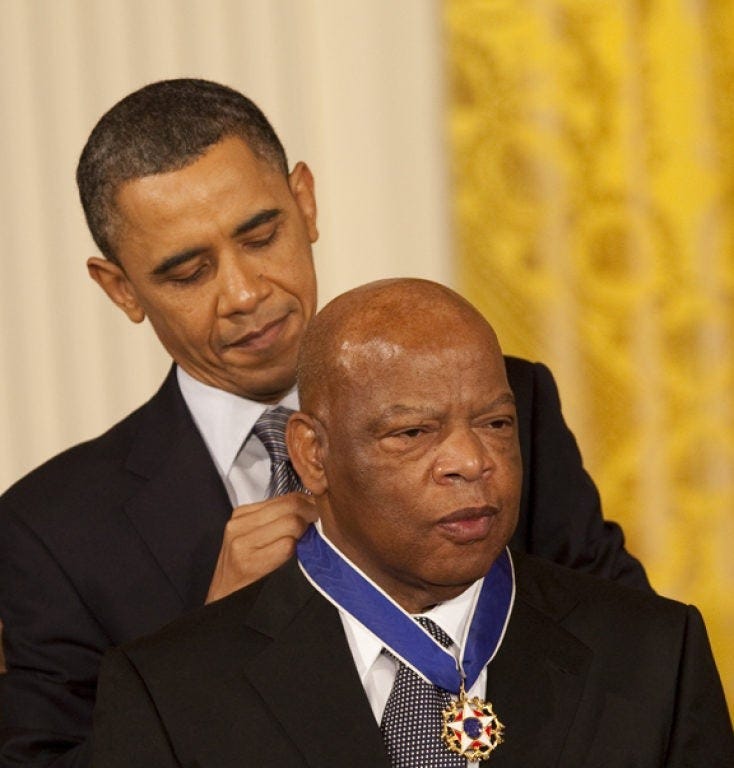https://medium.com/moxietalk-with-kirt-jacobs/t-r-o-u-b-l-e-john-lewis-good-fight-221ce40b2c14
Not too many people are bold enough to tweet their arrest photos.

Then again, not too many people are John Lewis. He’s tweeted the photo every year for the past several years to commemorate the time he was arrested for using a “whites only” bathroom in Alabama. For this “offense” he ended up in the notorious Parchman Farm Penitentiary.
Our world has changed a lot since that mugshot was taken, and many of the changes have happened because of the man pictured in it.
Lewis has represented the 5th district of Georgia in the U.S. House of Representatives since 1987. But before that, he made his name as one of the driving forces of the Civil Rights Movement.
Moxie isn’t a big enough word to describe John Lewis, but it’s a start. Here’s how:
Moxie gets into trouble.
That mugshot is far from the only one for John Lewis. He’s been arrested forty times, and he’s said that even at the age of 80, he’s willing to add a few more pages to his rap sheet for the right cause.
“My philosophy is simple: when you see something that is not right, not fair, not just, say something. Do something about it. Get in trouble. Good trouble,” says Lewis in a new documentary out called “John Lewis: Good Trouble.”

He’s lived his life by that philosophy. He was born into a family of 10 children in Troy, Alabama in 1940. His family sharecropped, and for the first several years of his life, Lewis had little exposure to white people. But once his world widened beyond the land the family farmed, he quickly recognized the injustice he and other Black Americans faced. The segregated South was intentionally constructed to keep Lewis as poor, uneducated and disadvantaged as possible.
But a movement was underway, and the radio carried the sounds into his home. He heard Martin Luther King Jr. on the radio calling for justice. By his late teens, Lewis was more than ready to both say something and do something.
You’re never too young to lead with moxie.
Lewis first met King when he was just 18 years old. When he attended college in Nashville, he became active in the Nashville Student Movement, peacefully protesting segregation laws. He got his start on his lengthy arrest record there, sitting in at lunch counters and organizing bus boycotts and other actions. He helped organize the Student Nonviolent Coordinating Committee, which became crucial in the movement. Lewis was trained and committed to non-violent, peaceful protests.

Unfortunately, the people who opposed civil rights were not at all dedicated to non-violence. When he was 21, he became part of the Freedom Riders, a team of black and white activists who attempted to ride public buses across the old Confederate states seated side by side. Their efforts were met with violence at every stop. In Rock Hill, S.C., Lewis was attacked in a “whites only” waiting room. The Freedom Rides became so violent that the original organizers abandoned the effort. Lewis and other members of the Nashville movement took up the strategy and saw it through to its bloody, battered end.

On March 7, 1965, Lewis quite nearly gave his life for the cause as part of the protest march from Selma to Birmingham. As he crossed the Edmond Pettus Bridge in Selma, Ala., he and others were set on by police officers. The officers beat Lewis so badly that his skull was fractured. That horrific day, which has now become known as Bloody Sunday, marked a turning point in the effort to win voting rights for Black Americans and led to the passage of the Voting Rights Act.

Before Lewis turned 30, he’d already made significant contributions to changing the world, and he’s got the scars to prove it.
Moxie never retires.
Lewis might have thought he could breathe a little easier once Barack Obama was elected. On the eve of President Obama’s inauguration, Lewis said, “Barack Obama is what comes at the end of that bridge in Selma.”

But alas, it was not to be so. Key provisions of the Voting Rights Act were struck down by the Supreme Court in 2013, and many have been alarmed by what they see as suppression efforts ever since. Add to that a series of high-profile cases of Black Americans killed at the hands of police, and harassment of Black Americans by whites and it seems that we’ve taken steps back from eradicating the racism that’s plagued America since its founding.
Obama’s two terms have been followed by a president who has repudiated and rolled back as much of his predecessor’s work as possible, however, Congressman Lews received the Presidential Medal of Freedom under Pthe 44th POTUS, Barrack Hussein Obama in 2011.

Lewis is far from ready to give up. He’s still a powerful and respected voice in the House, and his influence helped flip control to Democrats during the 2018 mid-term elections.
Congressman John Lewis’ Wikipedia Page: https://en.wikipedia.org/wiki/John_Lewis_(civil_rights_leader)






























